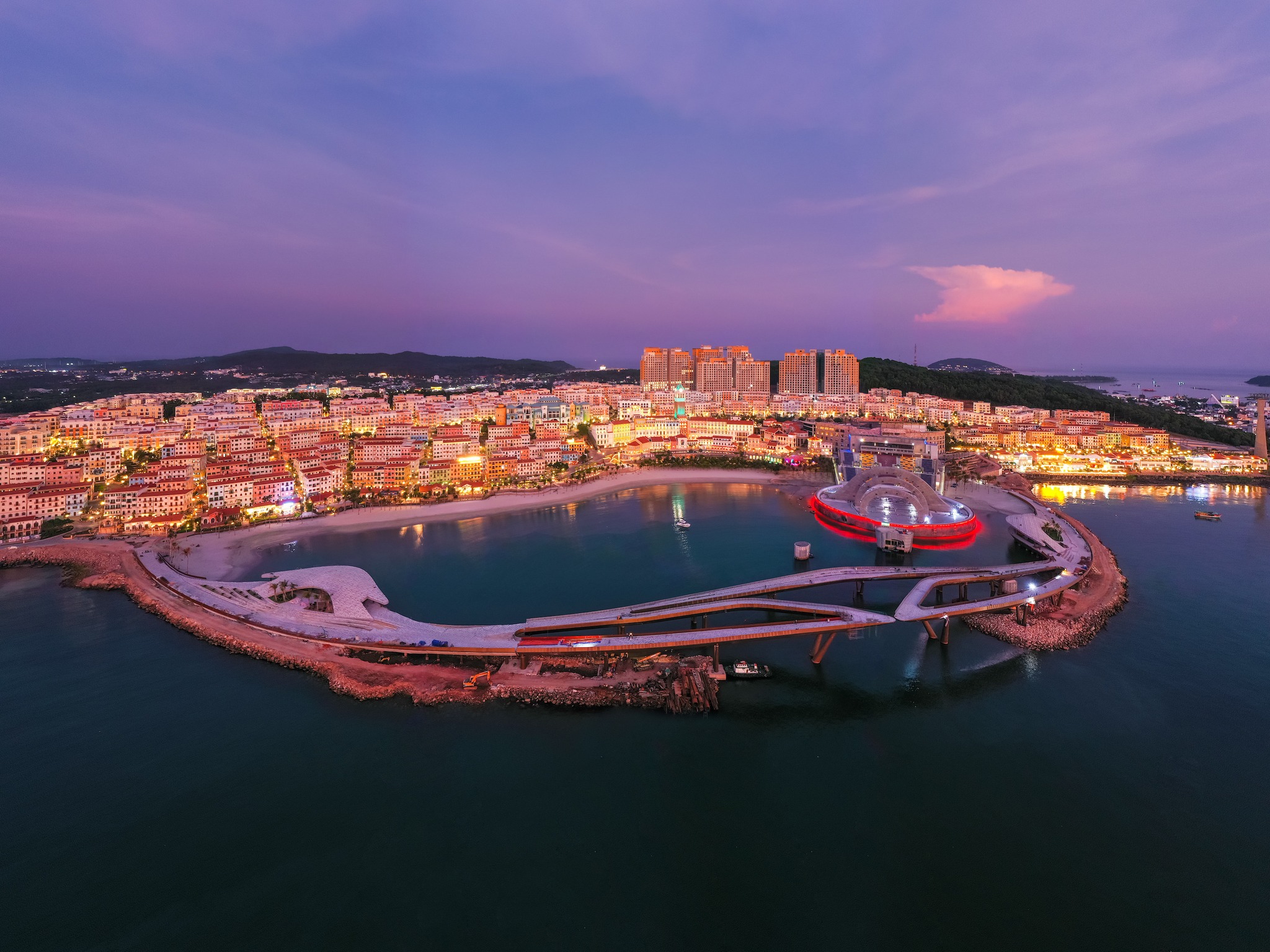Da Nang, nestled in Central Vietnam, offers a stunning blend of mountains, plains, and coastline. Whether you’re drawn to the iconic Ba Na Hills, pristine My Khe Beach, or the dramatic beauty of Hai Van Pass and Son Tra Peninsula, this destination promises natural charm and world-class experiences year-round.
Da Nang Weather Month by Month – When Is the Best Time to Visit?
The city experiences a monsoon tropical climate with two well-defined seasons:
Dry Season: January to July
Rainy Season: August to December
Choosing the right month ensures you’ll enjoy your trip to the fullest—whether you’re chasing sunsets, lounging seaside, or exploring food and culture.
Monthly Weather Snapshot
January
Dry season begins.
Temperatures: 18.5–24.8 °C (65–77 °F)
Rainfall: ~96 mm; Humidity: 80%
Ideal for sightseeing at Marble Mountains, Linh Ung Pagoda, or Cham Sculpture Museum. Enjoy festive west-coast vibes and evening strolls along the Dragon and Han River bridges.
February
Still dry and spring-like.
Temperatures: 19.8–26.1 °C (67–79 °F)
Rainfall negligible
Perfect for flower festivals and spring rituals. You might catch local cultural events featuring traditional games and folk performances.
March
Warming up comfortably.
Temperatures: 21.5–28.7 °C (71–84 °F); Rainfall: ~22 mm; Humidity: ~79%
Great for cultural festivals and temple visits like the Guan Yin Festival, which celebrates local heritage.
April
Warm with occasional breezes—spring subtly transitions to summer.
Temperatures: 23.3–31 °C (74–88 °F); Rainfall: ~27 mm; Humidity: ~80%
Ideal for attending the Cầu Ngư (Fishermen) Festival or beach walks under gentle sun.
May
Beach season begins in earnest.
Temperatures: 24.9–33.4 °C (77–92 °F)
Sunshine: 234–277 hours per month
The beaches and Ba Na Hills are perfect for both sun-worshippers and cool-altitude escapes.
June
At peak heat with early summer intensity.
Temperatures: 25.5–33.9 °C (78–93 °F); Rainfall: ~87 mm
Ideal for swimming, seafood, and summer entertainment across beaches and city.

July
Still part of hot season.
Temperatures: 24–33 °C (75–91 °F); Rainfall: ~87 mm
A great time for local fruit treats—durian, rambutan—or day trips to nearby orchards.
August
Rain transitions begin, but weather remains enjoyable.
Temperatures: 25–33.9 °C (77–93 °F); Rainfall: ~103 mm; Humidity: ~85%
These cooler rains refresh the air—great for snorkeling, beach fun, or a scenic visit to Ba Na Hills.
September
Peak of rainy season.
Temperatures: 24–31.4 °C (75–88 °F); Rainfall heavy with 15–20 rainy days; Humidity: ~90%
Fewer crowds, lower prices. Festive Mid-Autumn and National Day celebrations light up the streets.
October
Rainy weather continues but with gentle breezes.
Temperatures: 23.3–29.6 °C (74–85 °F); Rainfall: notable; Humidity: ~85%
Great for cozy café time or luxury resort relaxation—not beach-focused, but still charming.
November
Cooler and transitioning to dry.
Temperatures: Ba chung: 28 °C; Highs: 32 °C (90 °F); Lows: 23 °C (73 °F); Rainfall decreasing
Ideal for riverside dinners and evening strolls along Bach Dang Park.
December
Dry season returns with refreshing breezes.
Temperatures: 19–28 °C (66–82 °F); Light rain (~50 mm); Humidity lower
Festive holiday vibe: twinkling lights and warm evenings before Vietnamese New Year.

Best Time to Visit Da Nang & Travel Tips
Best overall weather: February to August—dry, pleasant, prime for beaches and hillside excursions.
Budget-friendly & mild: January to April—cooler air, affordable rates, fewer tourists.
Lush & quiet season: May begins peak beach season with warm, inviting weather.
Cultural richness in rain: September—rainy, but moody and full of local life, festivals, and peaceful charm.
Cozy charm: October–November—moderate temps, softer light, perfect for urban experiences.
Festive warmth: December—holiday beauty with temperate climate and sparkling city lights.




